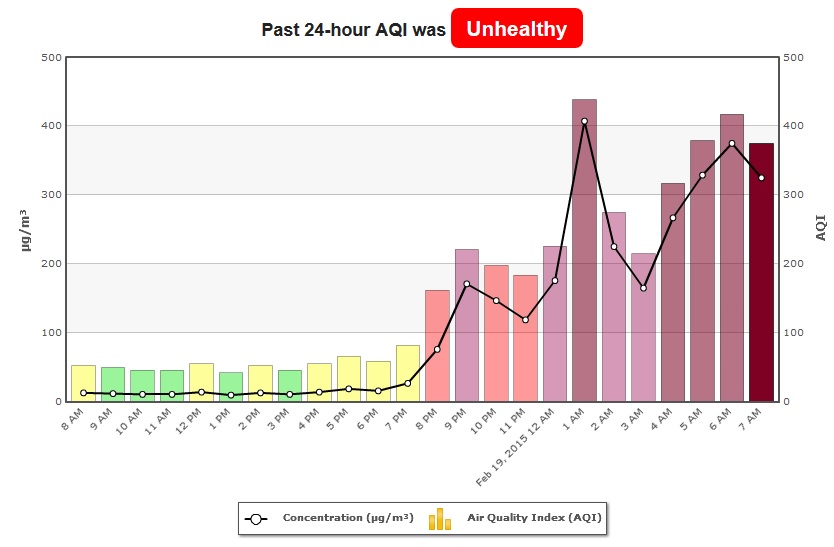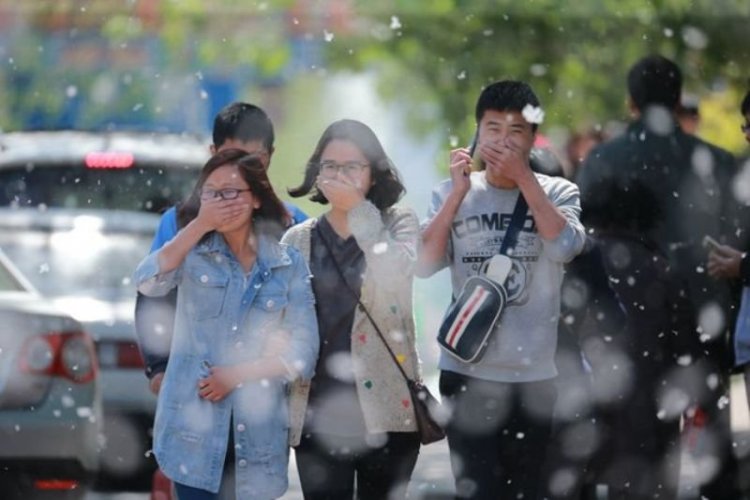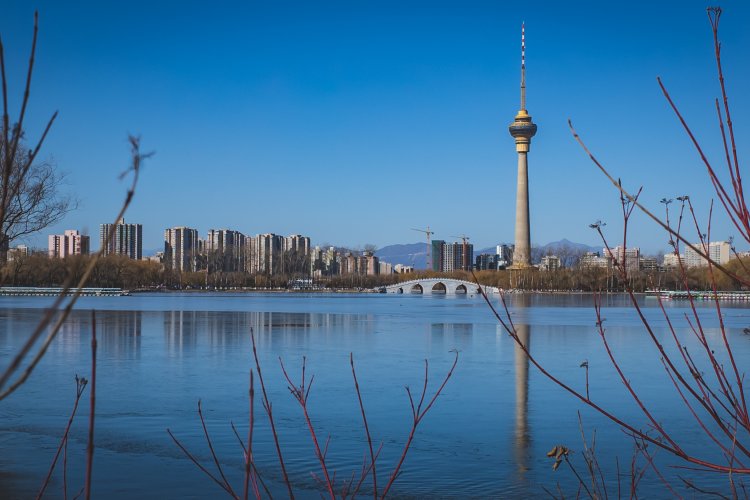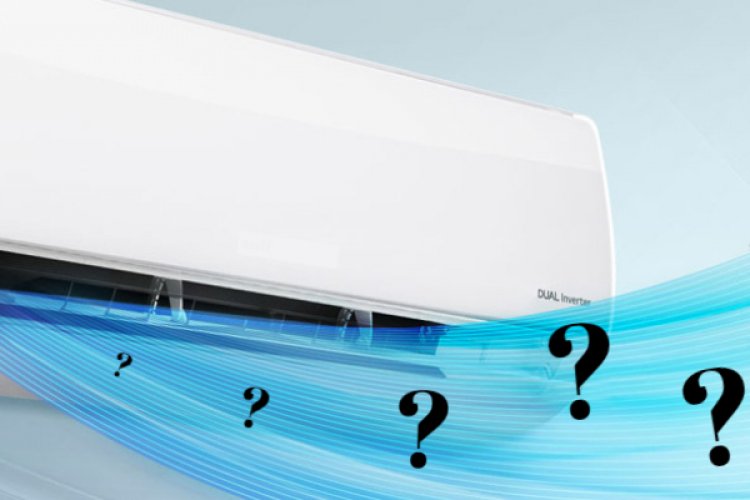Bad Air Ushers in the Year of the Sheep
Blame the fireworks: with as much as one-third of the city's population out of town for Spring Festival, factories on holiday and light traffic on Beijing's streets, the Air Quality Index (AQI) this morning is nevertheless hovering in the upper 300s.
Everyone's favorite new year's celebration device, fireworks, are to blame, transforming yesterday's beautiful blue sky day with AQI readings under 100 into today's mini airpocalypse.
Anticipating this, municipal officials had urged Beijingers to keep fireworks to a minimum this year, with vendors given only 10 days to sell (half of last year's 20-day sales period) and more stringent rules on when fireworks are to be tolerated.

Truth be told, this year's maelstrom has so far followed the downward trend of the past few years. Reports in this morning's Beijing News have officials estimating that fireworks sales are down 34%, while only 25 fires broke out last night and a mere 13 morons have managed to injure themselves by blowing off their personal celebratory arsenals so far.
Should you get the urge, you have until Feb 23 to restock on officially tolerated explosives and help keep that particulate matter high like your lungs are used to.
Meanwhile, some glimmers of hope on the war against smog come from these Stanford researchers, who have stumbled upon a material that they claim could be more effective than the typical HEPA filtration we've all come to know and love.
The material, polyacrylonitrile, is commonly used in surgical gloves and has the benefit of being almost transparent as well as being a passive collector of particulate matter. This means filtration could be done in a less energy-intensive way and could be used in place of screens on windows and other areas when transparency is desired.
The Stanford News reports: "Using a technique called electrospinning, the researchers converted liquid PAN into spider-web-like fibers that are just a thousandth the diameter of a human hair. [In their tests], the researchers approximated Beijing's smog by flowing smoke from burning incense over different densities of the fiber, and later performed a field test in Beijing. The final material allows about 70 percent transparency and yet collects 99 percent of the particles."
In other smog-related developments, the US has decided to expand the on-site air quality measurements it has long been doing in Beijing to other US embassies around the world, including Delhi, which is quickly snatching the title of World's Filthiest Air from Beijing
And meanwhile, today's forecast calls for smog. Sigh.
Image: US China Mission







